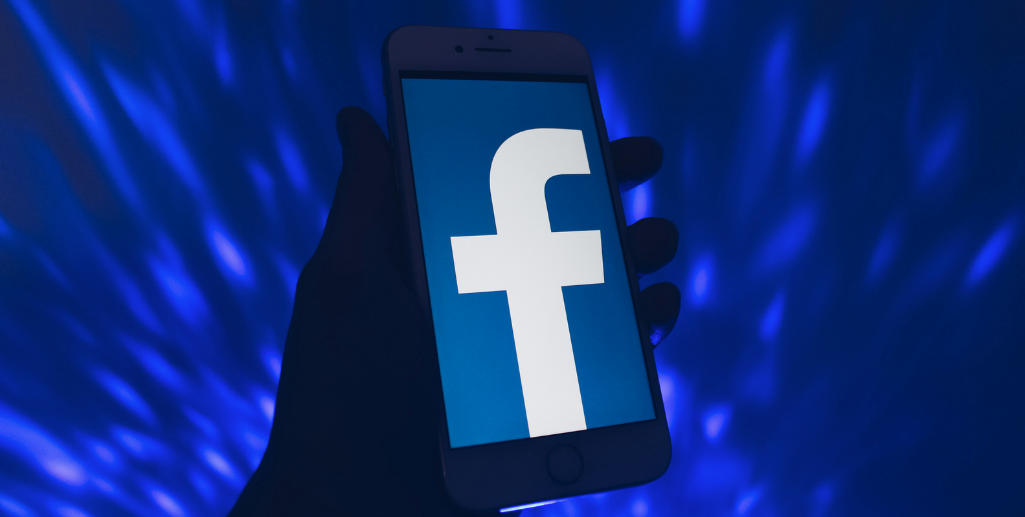
4 Long-Term Ad Strategies that Actually Work and Mistakes That You Should Avoid
While setting up ad campaigns, it is quite easy to look for ways to drive as much traffic as possible from the get-go.
It is difficult to look at retargeting as an option because one-ad, one-click, and one conversion are more appealing.
It might work on a very small scale, that is, if you are lucky.
Other times, the advertisers apply complex funnels to motivate consumers to take the desired step, and even these are not long enough to get the desired result.
Here is the place where long- term ad strategies come in handy.
Much like any other relationship, it takes time to form a strong and authentic relationship with the users, so that they become your customers.
Here, we will show you four ways of doing exactly that with ease.
We will discuss the need for applying long term strategies on Facebook and other such platforms.
It will include the budget, time of starting the ads, and specific strategies that will help you get the desired result in the future.
The outcome of these strategies is significant thanks to its ability to turn several users into clients through long exposure.
This process does require a lot of creativity and branching out.
What do long-term strategies mean?
Let’s begin with a truth bomb – Long-term strategies would take months to show proper results.
Don’t click away just yet; you will not regret it.
This is a long term investment that requires a low budget, and it will not take away from your current warm and hot leads.
This insurance policy will help you invest regularly to create more customers with time.
Here, the motive will be to keep the customers engaged until they decide to be customers.
This strategy wants to ensure that no potential client slips through the cracks along the way.
Several bigger brands and even smaller ones invest significant funds into content marketing to get regular engagement from their audience.
With long-term ad strategies, you will aim for a similar result.
Importance of long-term ad strategies

If you have ever purchased a product on Facebook, you would know that looking at the product for the first time never encourages you to buy the product.
It is probably in the 2nd or 3rd time of the advertisement that you decided to make the purchase, even longer at other times.
This corresponds with the marketing Rule of 7, which states that a potential client needs to interact with the brand 7 times before making the purchase.
It might not always be accurate, but having a sale the first time a client interacts with the client is next to impossible.
The purchasing point will vary customer to customer.
Millennials do more research before buying.
Business to business customers put in more effort as compared to business to customer clients.
If your clients do not have the demand for the product (it usually happens on social media sites), then demand generation will take more time.
Exposure is needed to ensure that more customers take the plunge.
Others might be interested in the product but might have set it for a later date due to financial or time constraints.
Other aspects like space constraints, plans, and more might be the reason for the delay as well.
There is an array of reasons behind potential clients not being ready to buy your product now or in the recent future, but they are more than willing to convert at the right time.
It is these clients that long-term ad strategies aim to rope in and convert.
How much money will you shell out on this project?

For long-term investment ads, it is logical to opt for an option that only requires you to allocate a small portion of the ad spent on this section.
You can keep it at a comfortable 10% for the most part.
The rest, you can leave to your judgment and the product.
The issue with running short term ads is the fact that they require you to keep in pumping money to get instant results.
For as long as the campaign is running, you will see the results, but that well will dry as fast as it filled.
In businesses, being near-sighted in terms of investments is always bad.
With these long term ads, you will be spending some money on brand building, which will yield results well after you have exhausted your resources for those high-converting ads.
Moreover, these long-term campaigns give you a chance to organically improve your reach when paid campaigns are done and dusted.
This exercise will give you more sustainable development for years to come.
The 4 Long-term Ad Strategies that work
Now, let’s come to the meat of the matter.
These are the tried and true strategies that will work for your business.
All these methods will include a combination of PPC and organic marketing.
Also, organic marketing will be used to create retargeting campaigns that will keep potential clients engaged.
Now, let’s discuss each of the strategies in detail.
-
The ‘like’ campaigns

In between, there came a time when it is easy to buy likes on the posts.
This stopped several people from running campaigns to like and follow the page.
Side note: Buying likes is not a good idea because it takes away from real engagement.
Moreover, social media sites have become more vigilant against such means.
Another factor that took away from like campaigns was the fact that people opted to rely heavily on conversion campaigns.
The entirety of your ad campaign money does not need to go to this section, but it is only logical to improve engagement by running like campaigns.
This like campaign will work as a social proof that will garner trust among all other users who visit your page for the first time.
Also, as the algorithm of Facebook and other social media sites shows more content of the recently followed pages.
The benefits of these campaigns are
- New users see your content, your engagement increases; other users see your content due to increased engagement.
- New followers mean more engagement over a long time.
- This data will allow you to retarget potential clients who have already engaged with your profile.
This, in turn, will help you run more successful conversion-oriented campaigns.
In the ‘likes’ campaigns, you will run content-oriented ad campaigns.
You can give incentives to users to like the post or the page, like a contest that offers a grand prize.
Tracking the accurate return on investment is next to impossible for these campaigns, but they help.
-
Promoting Facebook Group

Having a close-knit group of friends who like similar things can be a great engagement source.
Facebook groups work as the platform to get more like-minded people in one space.
Apart from the ability to make the group open or closed based on requirements, the algorithm pushes the content of the group to the top, which means more access to the followers.
You can not directly advertise on Facebook groups.
They are good for member joining and engagement.
You can use email and organic promotion, but making your group reach a humongous size will take much more.
You can also use PPC campaigns but tread carefully.
An ad that is dedicated to getting more traffic and potential members to the Facebook group will not sit well with Facebook.
However, there is a way around it that is valid.
Create a new and organic post that has a link to your group and boost it through the ad system.
Use either the ‘boost post option’ or make an ‘engagement campaign’.
The post should focus on the benefits of the group, be welcoming, and create engagement among users.
Use high-quality pictures that are attention-grabbing and promote conversion.
As a long term campaign, do not expect it to show return on investment in the first 7 days.
Instead, the data shows that it takes anywhere between 7 to 28 days to nurture the relationships before turning users into customers.
-
Lead generations ads to increase your email list

Lead generation ads conventionally focus on getting people on the phone to turn them into leads as quickly as possible.
However, that is not the only right way to do it as you can also use it to create an email list and have sales over time.
For the most part, the people who click on these leads are not yet ready to turn into clients.
They are dipping their toe into this metaphorical pond just to get a read of the temperature.
For these people, long term plans are the way to go.
Getting their email and giving proper updates from time to time will get more results over time.
Email marketing costs significantly less while being very effective.
Use it to your advantage by providing details of the latest products and discounts until the person finally decided to convert into a customer.
The main aim of creating these lead magnets is that they should be relevant and with the current times so that they gain more interaction.
This technique also improves the chance of people signing up for the email and opening the door to receive content from you for a long time.
Pro tip– Do not make a long, complicated, or even a little more than the bare necessary form that people need to fill to sign up for the emails.
Too long of a forum will have the user gone without signing up at all.
You aim to get more people to sign up for the emails so that they can drive significant conversions in the future.
Immediate conversions are almost impossible (use ad manager to check), you will have to keep a close watch on how the lead convert.
You can do this via your email software’s analytics that will show the open rates and clicks.
You can also determine the conversion rate through Google Analytics.
Lead generation campaigns do cost more, so it is only fair to want it to start working within a month.
It does not mean that all conversions should be in the first month, but a few should.
-
Go live

Facebook got an update that allowed users to go Live, and this medium of interaction has significant value for brands and businesses that would like to grow their business.
When brand streams live, it appears more authentic and transparent, even though there is a good chance that you have a script.
Going live gives you the chance to interact with followers, and that kind of engagement will have a lasting effect.
Followers are likely to get a notification when you come live on Facebook, and if someone happens to open the app at the time of live streaming, you will appear at the top.
Go live regularly on Facebook for a minimum of 10 minutes, and whenever possible, stretch it to 2 hours.
Also, broadcast the time of coming live beforehand so that the users are already interested in the video.
The math here is simple, the longer you stay live, the more people connect, and you get a bigger audience to retarget.
Even when the users stay for a fleeting moment, you will give Facebook the required information to retarget the individuals on the platform.
Once the users have followed, liked your page, or joined your group, you should use lives to keep them engaged with the brand.
Afterward, you can generate conversion ad campaigns that retarget based on video views.
This will ensure that you are targeting the relevant audience.
Blunders of long-term ad strategy that you should avoid
Here are some mistakes that you should avoid to ensure that your strategy works.
Giving up too quickly
It is easy to look for instant gratification, but long-term ad campaigns will not provide it.
You will have to wait for 7 to 28 days at the soonest to see any results.
KPI’s still matter
There is a huge difference between slower and no results.
It is crucial to evaluate the results to determine the effectiveness of the campaigns.
For this, you will have to determine the KPI’s before you start the campaigns.
Waiting for the right time
It is easy to push it to the back of your head and say that you will start the long-term campaigns when the time is right, and you have more budget, but don’t.
Start today, because it is a low investment and high return on investment.
Sticking to one strategy
Use more than one long-term campaign at a time to engage more clients.
Also, get creative with your work and look for a balancing act between the different campaigns that work for you.
Most important of all, be agile and change as required.
One creative for each campaign:
Using one creative for each campaign is the easy way out and also something that will not keep your users engaged.
Create different campaigns to the target audience.
Conclusion
Short-term campaigns will help you grow rapidly and have higher sales, but it is the long-term campaign that will build your brand and grab more of the potential clients.
Patience is your friend here, as you will see the results over time, but these results are worthwhile.
Feel free to ask questions, share your experience, and thoughts in the comment section below.
Let’s keep the dialogue going.
If you would like to l.earn Affiliate Marketing for FREE, check out my Ultimate Guide to Affiliate Marketing












